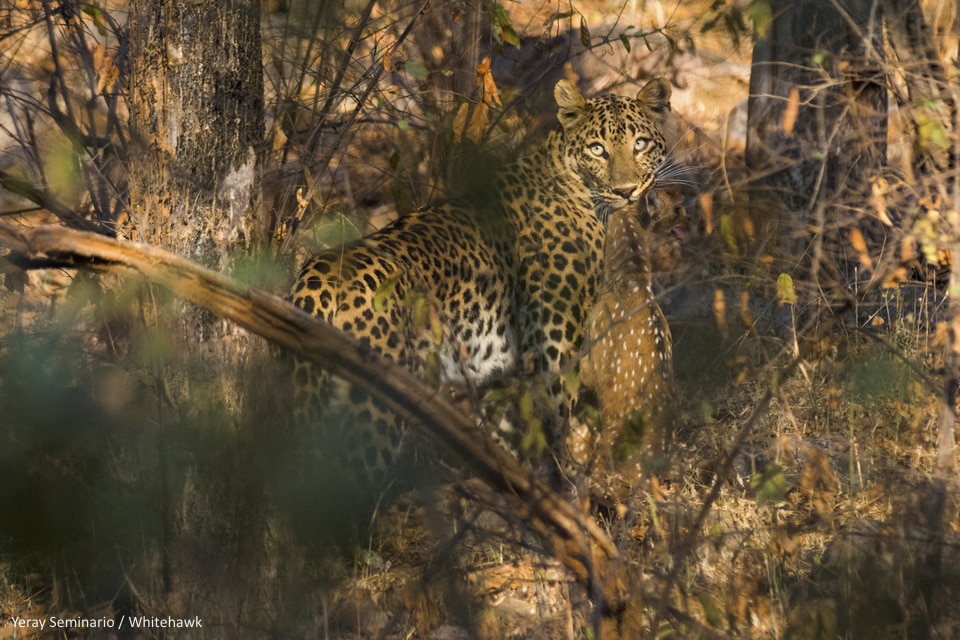
Have you ever dreamed of seeing a tiger walking through the shaded patches of a forest? Perhaps you dream of seeing a Snow Leopard traversing the slopes of the Himalayas? Or maybe you long to see one of our planet’s many other incredible wild cats in their native habitat? If so, a trip to Asia might be in order! Given Asia’s large size and the variety of habitats it encompasses, it might not come as much of a surprise to learn that there are more wild cat species found on this continent than anywhere else in the world – twenty-one species to be exact. Asia is also home to both the largest (Siberian Tiger) and one of the smallest (Rusty-spotted Cat) of the world’s wild cats.
India alone has around 15 species, a few of which are relatively easy to see during a tour there. Sri Lanka is another fabulous destination for cat sightings, particularly in the drier months of the year (July and August). Mongolia, too, can be a reliable place for some cat watching, particularly for Snow Leopards. Though we don’t have space to write about every wild cat found in Asia, such as the Cloud Leopard or the Leopard Cat, read on to learn about a few of the other incredible wild felines found on this continent, as well as the best times and countries in which to spot them. If you have longed to see these cats in the wild, it just might be possible to make this dream come true.
Bengal Tiger
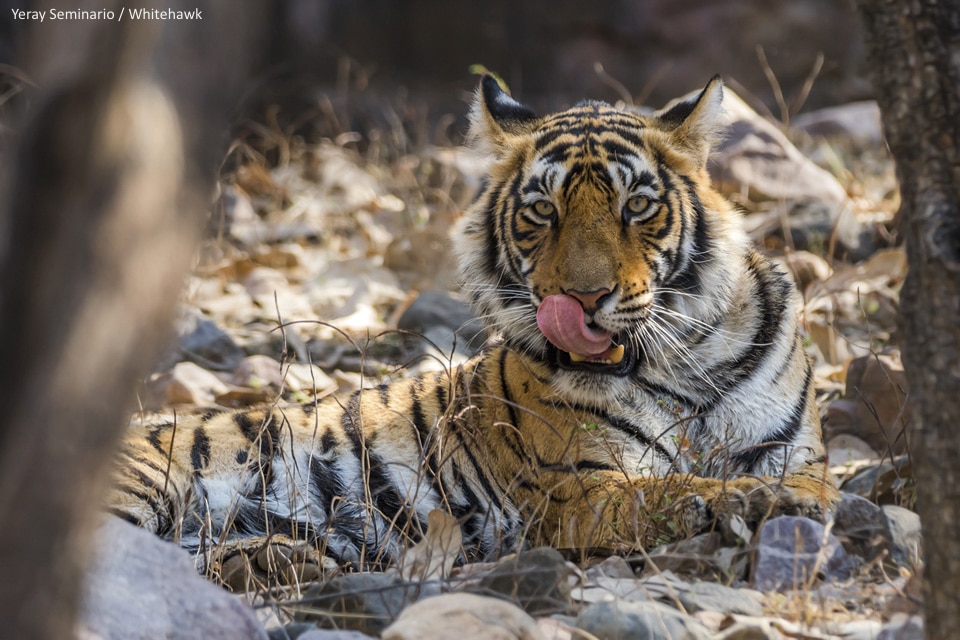
We have said this before, but it certainly bears repeating. There is nothing quite like staring into the piercing eyes of a Bengal Tiger. Second in size only to the slightly larger Siberian Tiger subspecies (found in northern Asia), a male Bengal Tiger can exceed 250 kg in weight. Though also found in Bhutan, Nepal, Bangladesh, and perhaps some still remain in China, the tiger population in India is by far the largest, with over 3,000 individuals estimated to make their home there. By comparison, scientists believe that the number of Bengal Tigers in Bhutan, Nepal, and Bangladesh does not exceed a few hundred per country.
Tigers are generally solitary creatures. Males and females come together to breed, and the female and her cubs will stay together for 2 to 3 years, until the young become independent. The female can have as many as 4 cubs. They are born with their ears and eyes closed, but by the time they are around 2 months of age, they are ready to eat solid food and explore the world, following their mother around on her hunts. Though they won’t participate in a kill for several more months.
This large cat feeds on Sambar, Guar, Spotted Deer, langurs, and some smaller mammals such as porcupines and hares. It might also take large birds such as Indian Peafowl. Habitat destruction and loss are a massive threat to this species. However, poaching is perhaps the biggest threat it faces. Poachers kill tigers for their skins or other body parts, which they sell for their supposed medicinal properties. Farmers also may kill tigers in fear or retaliation because farmers believe tigers are responsible for killing their livestock. It is currently classified as Endangered throughout most of its range.
Many countries now have designated tiger reserves and are working on conservation initiatives. However, much work remains to be done to save this magnificent species.
Snow Leopard
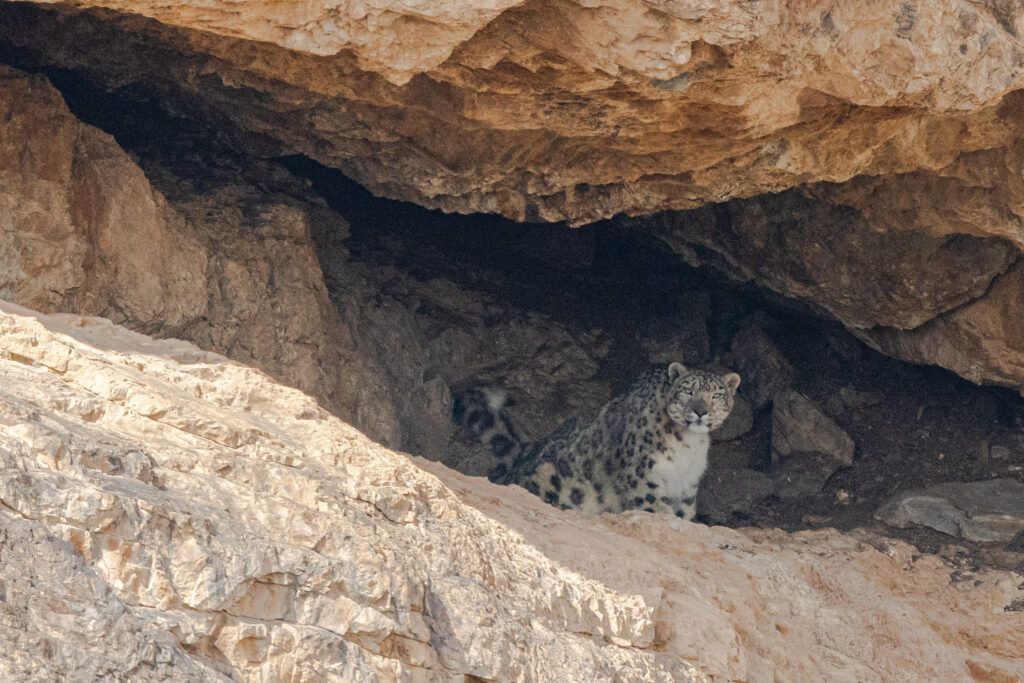
India and Mongolia are home to the first and second largest populations of snow leopards in the world, respectively. These agile cats inhabit mountainous regions of several other countries as well. They are found in Tajikistan, Kyrgyzstan, Uzbekistan, Kazakhstan, Afghanistan, Pakistan, Nepal, and Bhutan. They are perfectly adapted to living in cold weather. Their small ears help prevent heat loss. Their wide paws are perfect for walking in snow. They not only use their long tails for balance when running, but also to wrap around their bodies when they sleep, for added warmth.
Like most cat species (even our domestic ones), Snow Leopards leave scent markings and scrapes to mark their home range territory, which can range from 83km2 to over 250 km2. Males tend to keep larger territories than females. These cats are also solitary, except during breeding and when the female and cubs are together. Females usually have between 2 and 3 cubs. These beautiful felines are adept at chasing prey down steep slopes. They feed on large mammals such as Blue Sheep, Argali, Ibex, and other ungulates. They will also take medium-sized prey such as marmots, and even small prey like squirrels and rodents. Scientists have also discovered that they sometimes eat twigs and grass.
Snow Leopards are categorized as Vulnerable. Habitat loss, which climate change will undoubtedly play a role in, is a major threat to this cat. However, poaching remains one of the biggest threats to its survival. Similar to tigers, Snow Leopards are killed for their skins or for other body parts perceived to have some sort of medicinal property. Sadly, human-wildlife conflicts also exist. Livestock can destroy habitat for native prey animals. An abundance of domestic animals and scarcer and scarcer natural prey means that these cats often turn to goats, sheep, horses, and other domestic animals for food. Farmers and ranchers sometimes kill these cats in retaliation. Programs that support local families, such as tourist homestays, can help incentivize people to protect these wild cats.
Jungle Cat
Jungle Cats, also known as Reed or Swamp Cats, are medium-sized, long-legged felines. They tend to inhabit areas near water with sufficiently dense vegetation, such as swamps, wetlands, and riparian areas. They can also be found in agricultural fields, grasslands, shrubby areas, and near human settlements. Jungle Cats are considered diurnal, but can also be active at night.
Like many of the other cats we have written about on this list, the Jungle Cat is also solitary. Males and females come together during the mating season. The female raises her cubs alone and remains with them during the first 9 months or so of their lives. The female can raise 1 to 5 kittens per litter, and up to two litters per year. They have a varied diet, preying on rodents, hares, birds, reptiles, fish, and more. They are capable of jumping high from the ground and employ this technique when hunting birds taking flight. Scientists have also documented them eating fruits.
Though Jungle Cats are predators, of course, there are several animals that also prey on them. Dholes, leopards, large raptors, jackals, and more are known to hunt and kill Jungle Cats. They also face other threats, of course. Some of the biggest threats include habitat loss and poaching.
Fishing Cat

This medium-sized cat is the largest in its genus, Prionailurus. True to its name, it feeds on a lot of fish. It employs a few fishing techniques when catching prey – it might dive into deep water to snatch one in its teeth. Or it might use its partially webbed paws to deftly scoop one up from a shallow stream, creek, or pond. But its diet isn’t limited to fish. It also hunts on a host of other small animals such as small mammals, shellfish, reptiles, and amphibians.
Early winter (January and February) is the typical breeding season for this species. The female can have a litter of up to four young, which she raises on her own. By the time they are 10 months old, the kittens become independent, just a month or two after reaching full size. By the time they are around 15 months of age, they will have reached sexual maturity and be ready to find their own mate and reproduce.
Fishing Cats rely heavily on wetland habitats. Climate change and the alteration of wetlands for agricultural purposes are a threat to this species. Unfortunately, they are also vulnerable to poaching for the illegal pet trade, and farmers sometimes kill them for feeding on domestic animals. It is currently classified as Endangered. However, there are several conservation organizations working to protect this species. We hope that they are successful and that this amazing feline has a bright future ahead.
Manul (Pallas’ Cat)
The Manul’s small, flat ears, wide face, round pupils, and short legs give it an extremely distinctive look. Inhabiting rocky areas within grasslands, deserts, and steppe regions of more than 15 countries, it feeds mainly on small, burrowing mammals. Pikas, grounds squirrels, shrews, and voles are some of its main prey items. It hunts by snatching prey from their underground dens with its paw, or it snatches them at the burrow exits, or stalks them slowly through the vegetation. It will also feed on small birds and insects.
Like most of the other cats on this list, the Manul is solitary. The males and females come together for breeding. And the females remain with their cubs for several months until they become independent and leave their mother’s territory. The female can give birth to a litter of up to 8 kittens, which is a lot of mouths to feed. Male Pallas’s cats use scent markings to delineate their territories. Active mostly at dawn and dusk, the Pallas’s Cat uses dens to avoid predators, and to give birth to and shelter their young.
The International Union for the Conservation of Nature (IUCN) categorizes this small cat as Least Concern because of its widespread range. While this is terrific news, it doesn’t mean that the Manul does not face threats, such as habitat loss and destruction, predation by dogs, and dwindling prey.
Leopard
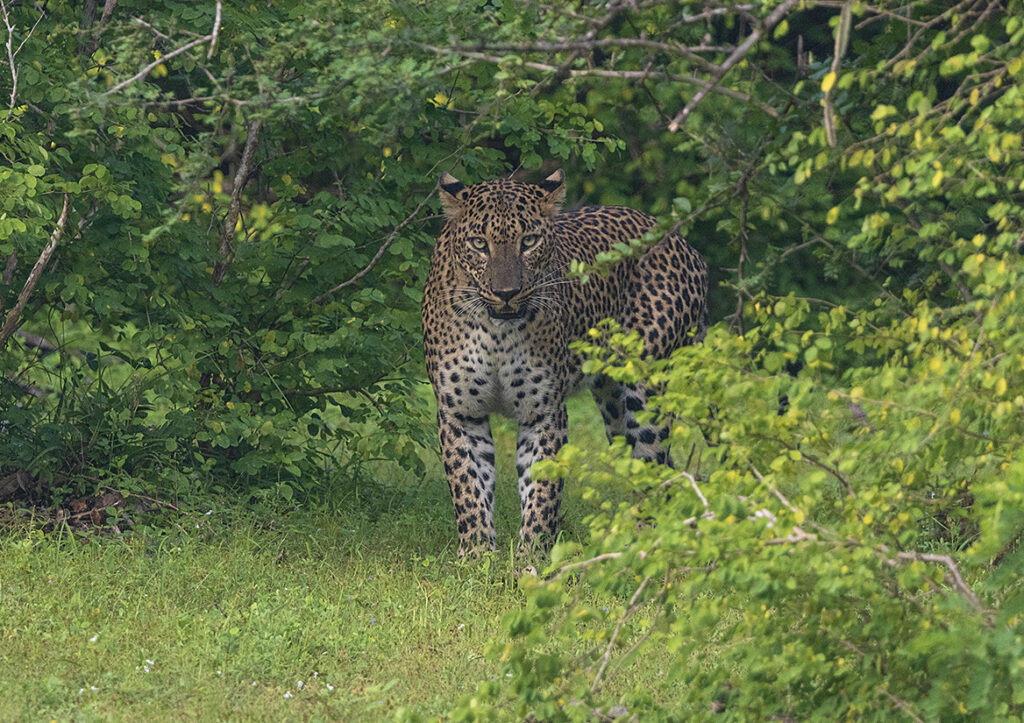
The same species of leopard lives on the continents of both Africa and Asia. However, scientists currently recognize eight subspecies, including the Sri Lankan Leopard, which is endemic to Sri Lanka. Other subspecies found in Asia include the Amur Leopard, Indochinese Leopard, and Javan Leopard, among others.
Adapted to living in all sorts of environments, they inhabit rainforests, grasslands, steppe, arid regions and mountainous terrain. Leopards are solitary mammals that feed on a wide range of animals, big and small. They prey on ungulates, such as duiker, bushbuck, and spotted deer. They will also take primates, such as langurs. Expert tree climbers, leopards sometimes drag their prey up onto a large branch, to keep it safe from ground predators and scavengers.
The IUCN categorizes leopards as a Vulnerable species. This means that leopards are at risk of becoming endangered if conditions for the wild populations globally do not improve. They are facing many of the same threats the other feline’s on this list encounter every day. Thankfully, there are several organizations working to protect this species across its range.
Asiatic Lion

India is the last country in the world where one can still find the Asiatic Lion in the wild! While fewer than 1,000 individuals remain, thankfully, their numbers have been steadily increasing over the past few decades. Male Asiatic lions can be solitary or move in loose prides of just a few individuals. The females, on the other hand, live in prides of up to a dozen other females and their cubs. Both male and female lions will take large prey, mostly ungulates such as Sambar Deer, Spotted Deer, Nilgai, and even domestic water buffalo.
Only one population of the Asiatic Lion remains. This puts the cats at great risk. A massive forest fire or a widespread disease could wipe out the population in one fell swoop. Conflicts with humans, particularly with farmers who may lose livestock to these predators, sometimes lead to retaliatory poaching. Education programs, community-based conservation, and habitat protection are ways to help conserve this amazing cat.
Rusty-spotted Cat
Since we started this list with one of the largest cats in the world, it seemed fitting to end this post talking about one of the planet’s smallest feline species, and the smallest of all the Asian cats. Weighing a mere 2.5 to 3 lbs (0.9 to 1.6 kg), the Rusty-spotted Cat is smaller than many domestic cats, which can weigh over 8 lbs. It lives only in India, Sri Lanka, and a small area of Nepal.
The Rusty-spotted Cat’s breeding season is relatively short. When the female is ready to give birth, she will prepare an area in a secluded den. She usually gives birth to one or two kittens.
This mostly nocturnal critter hunts small prey such as birds, insects, rodents, reptiles, and amphibians. It hunts mostly on the ground, though it can climb trees, which it might do to escape predators. Apart from some natural predators, it also faces many other threats. Habitat loss, particularly when their native habitat is converted to agricultural fields, poaching for its skin, as food, or due to human-wildlife conflicts, are a few of the main threats this cat faces.
Traveling to see Wild Cats in Asia
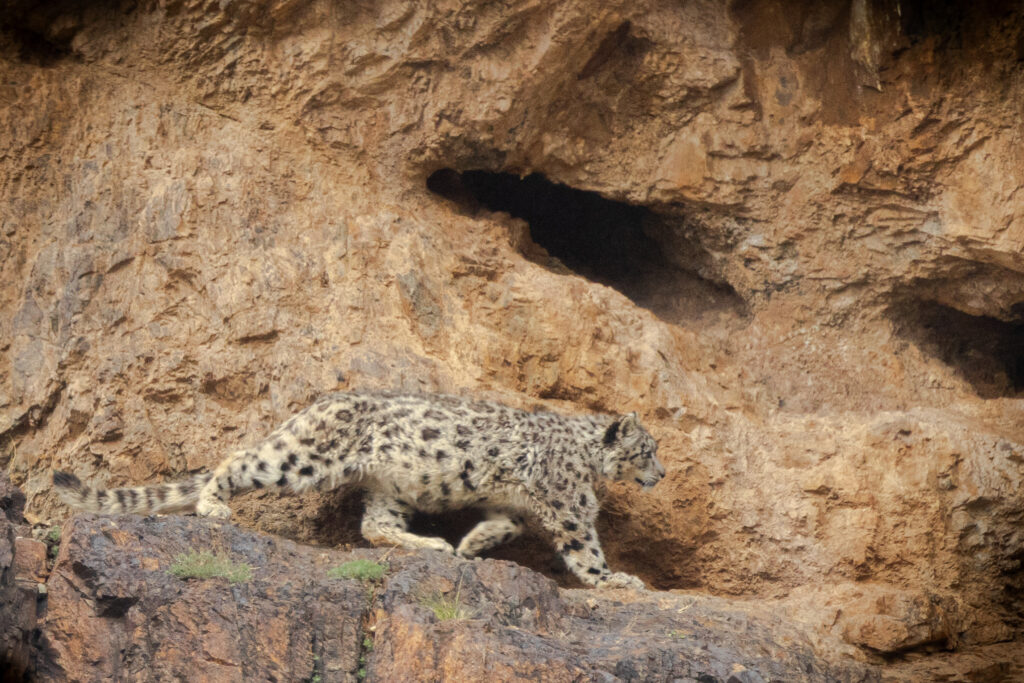
The Asian continent is filled with so many amazing countries to visit – the culture, food, history, monuments, ecosystems, flora and fauna vary considerably across the region. But, if it is wild cat sightings you are after, there are a few countries that stand out. The best place to see Bengal Tigers is India, of course. It boasts numerous tiger reserves across the country, all of which offer incredible tiger viewing opportunities. Some of the best include Tadoba, Ranthambore, Bhandavgarh, and Corbett.
We offer a 16-day tour to India in search of birds, tigers, and other wildlife. It is also possible to do a customized trip to just one or two tiger reserves and still get wonderful views of these spectacular animals. The best time of the year is March to May, when the weather gets drier and hotter, causing many animals to gather around watering holes, making them easier to spot.
India and Mongolia are two amazing places to search for the elusive Snow Leopard. In India, a tour will take you to the high elevations of the Himalayas in Leh, Ladakh. This tour is for the adventurous in spirit, as a quest in search of these amazing felines involves spending time in some remote and rugged regions of the nation. Our trip to Mongolia will bring us to the Gobi Desert, a vast and beautiful landscape, in search of these elusive felines. During both tours, we participate in homestays. And, we also donate a percentage of our profits from these tours to Snow Leopard Trust, a conservation organization working to protect these cats throughout their range. On our last trip to India, we saw four Snow Leopards over the course of a week. In Mongolia, we were lucky enough to see three – a mom and two cubs!
We have so far talked a lot about India. It is, of course, a fabulous place to see many wild felines, including Leopards, Asiatic Lion, and the Jungle Cat. However, Sri Lanka is another amazing destination one can go to search for many of these species. Sri Lanka is also one of the best places to seek out two more wild cats – the Fishing Cat and the Rusty-spotted Cat, particularly in the drier months of July and August.
In fact, we were lucky enough to see three Fishing Cats (one on a night drive and two during a night walk) while on our most recent trip to Sri Lanka! Of course, Sri Lanka is the only place to find the endemic subspecies, the Sri Lankan Leopard. Because India and Sri Lanka are so close together, with daily flights between them, a visit to both countries can be combined into a single trip!
Stay tuned for additional tours to India and Mongolia to search for the Pallas’s Cat.
With so many wild cats to see in Asia, a trip to this continent is a must for anyone interested in seeing some of these amazing mammals in the wild. It is also worth mentioning that Asia is home to some other spectacular wildlife, including bears, jackals, hyenas, gazelles, civets, and nearly 4,000 bird species. and likely over 1,000 reptiles. You can learn more about our trips to Asia here. We hope you will join us!

